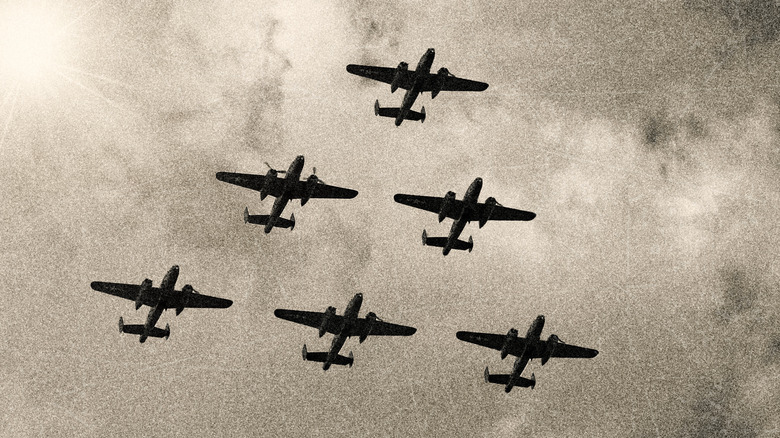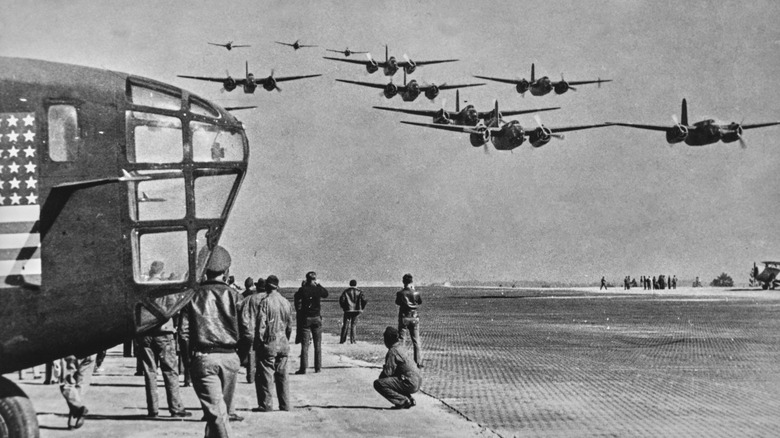Why Did WW2 Bombers Fly In Formation?
Because of its ability to attack targets that were hundreds of miles away from its airbases in England, the bombers of World War II were vital assets to the Allied war effort. Tasked with the destruction of enemy production facilities, key military infrastructure, and supporting ground warfare initiatives, WWII bombers undertook some of the most difficult and deadly missions in the war and were inflicted with significant losses. Bomber squadrons faced dual and unpredictable threats during every sortie, which included swarms of hostile aircraft and ground-based fire, and had to develop a strategy to counter these risks that gave rise to formation flying.
Throughout World War II, the United States Army Air Forces was organized into several smaller air forces, based on its area of operation; among these was the Eighth Air Force, which was based in Europe. The Eighth Air Force suffered costly setbacks as it conducted the bombing raids against Germany from its airbases in the United Kingdom, but later gained the knowledge to improve its bombing operations. One of the most important changes made by the Eighth Air Force was to fly bombers in formation, which the group continually developed and modified for the duration of the war, resulting in several different formation types
The biggest threats to American bombers were the formidable Luftwaffe fighter planes, which had to be countered with an effective defensive tactic. One of the most popular was called the "Combat Box" formation, which is attributed to renowned United States general and military strategist Curtis LeMay. Designed to provide better defense for the aircraft and create greater destructive efficiency, the principle of the combat box formation was to use the collective firepower of all the aircraft to guard the formation and produce better results for every bombing run.
Mutual defense and greater impact
The combat box formation was not a single arrangement, but had different variations based on the number of planes being flown. Within the combat box were four types of formations, including the element formation (which had three aircraft), the squadron (composed of 12 aircraft from four elements), the group (made up of three squadrons), and the biggest, the wing (including 108 bombers from three groups). An example of combat box positions for a squadron of 13 aircraft would divide it into four groups of three bombers each, with one solo bomber called a "tail end charlie," and the group would fly in a "V" pattern over the mission.
Aircraft technology during World War II was much simpler than today, resulting in bombers being very vulnerable. Starting with inadequate radar, bombers had difficulty identifying targets and threats. Defensive weaponry on the bombers, including those on the legendary B-17 Flying Fortress, were limited to just machine guns, which, though numerous, had limited range and field of view The size, restricted speed, and maneuverability of bombers also didn't do any favors, putting them at a disadvantage against fighter aircraft.
The United States flew several bombers during WWII, and the use of formation flying provided a safeguard against its adversaries. This, however, was not a guaranteed solution, as there are numerous instances of bomber formations that were penetrated, causing loss of aircraft and deficient bombing accuracy. In addition, the Luftwaffe had developed new approaches to defeat bomber formations, which included breaking the formation and isolating aircraft. It was only near the war's end, when the casualty rate for bombers lowered due to the introduction of long-range fighter escorts that were able to turn the tide for the allied bombing campaign.

